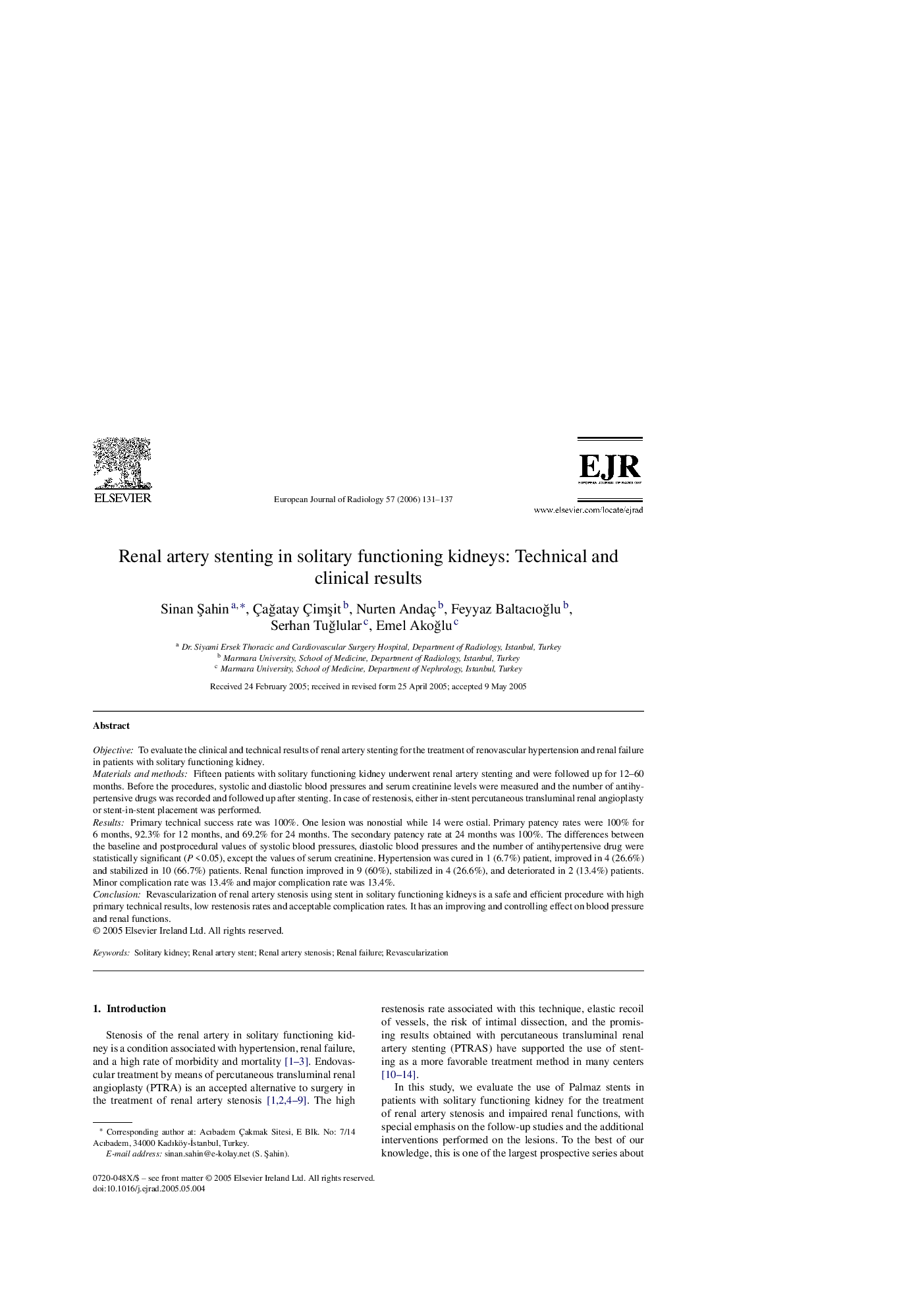| Article ID | Journal | Published Year | Pages | File Type |
|---|---|---|---|---|
| 4228830 | European Journal of Radiology | 2006 | 7 Pages |
ObjectiveTo evaluate the clinical and technical results of renal artery stenting for the treatment of renovascular hypertension and renal failure in patients with solitary functioning kidney.Materials and methodsFifteen patients with solitary functioning kidney underwent renal artery stenting and were followed up for 12–60 months. Before the procedures, systolic and diastolic blood pressures and serum creatinine levels were measured and the number of antihypertensive drugs was recorded and followed up after stenting. In case of restenosis, either in-stent percutaneous transluminal renal angioplasty or stent-in-stent placement was performed.ResultsPrimary technical success rate was 100%. One lesion was nonostial while 14 were ostial. Primary patency rates were 100% for 6 months, 92.3% for 12 months, and 69.2% for 24 months. The secondary patency rate at 24 months was 100%. The differences between the baseline and postprocedural values of systolic blood pressures, diastolic blood pressures and the number of antihypertensive drug were statistically significant (P < 0.05), except the values of serum creatinine. Hypertension was cured in 1 (6.7%) patient, improved in 4 (26.6%) and stabilized in 10 (66.7%) patients. Renal function improved in 9 (60%), stabilized in 4 (26.6%), and deteriorated in 2 (13.4%) patients. Minor complication rate was 13.4% and major complication rate was 13.4%.ConclusionRevascularization of renal artery stenosis using stent in solitary functioning kidneys is a safe and efficient procedure with high primary technical results, low restenosis rates and acceptable complication rates. It has an improving and controlling effect on blood pressure and renal functions.
